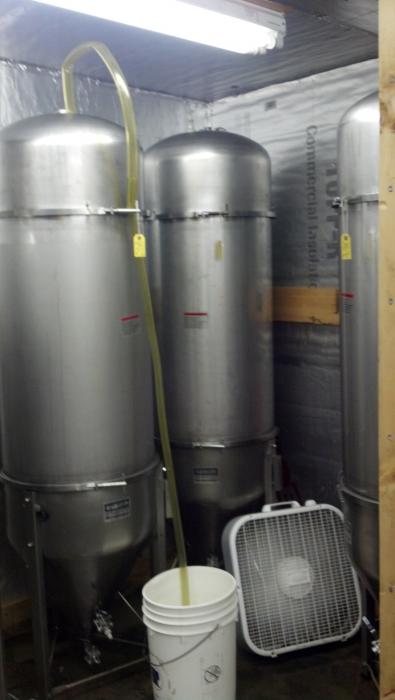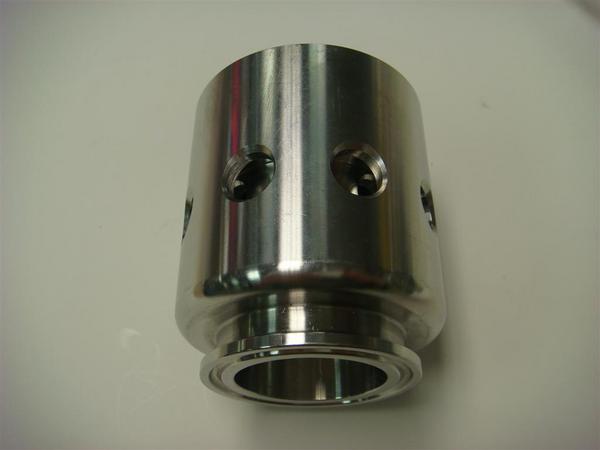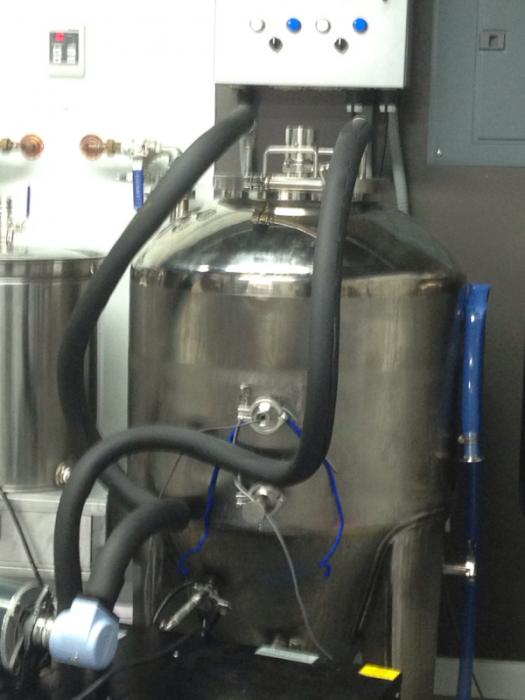MaxOut
Well-Known Member
Max capacity is 32. You have to factor your headspace based on the beer your fermenting.

















williamssvgHi,
I came across your post on your Glacier tank experience while doing some research of my own.
I am looking to purchase one with the intention of using it as a uni-tank; for both primary and secondary fermentation and then directly transfer to a keg for serving.
I am really interested in using it as a pressurized fermenter, how has your experience been with this? I am hoping I won't have to do any forced carbonation. From what I have seen, people who ferment under pressure first use and air lock and then attach the pressure relief valve after. Any idea why you can't use the pressure valve from the start of fermentation and adjust as pressure in the tank changes.
Please share your sources with information on pressurized fermentation.
Thanks a lot.
williamssvg
I have not used our fermenters for carbonation but i would not go with a pressure valve from the start. During the first week of active fermentation that small valve could get plugged up and then you would have huge problems. we blew the top of a 42 gallon fermentor when our air lock got plugged (should have used a blow off tube) and boy did that make a mess....
What we do is put the beer in our kegs and add some sugar and do the carbonation in the keg. Lots of stuff on the sight about how much to use ect...
Boar Beer said:williamssvg I have not used our fermenters for carbonation but i would not go with a pressure valve from the start. During the first week of active fermentation that small valve could get plugged up and then you would have huge problems. we blew the top of a 42 gallon fermentor when our air lock got plugged (should have used a blow off tube) and boy did that make a mess.... What we do is put the beer in our kegs and add some sugar and do the carbonation in the keg. Lots of stuff on the sight about how much to use ect...
I want to hopefully get everything done in the conical if possible. Since the Glacier conicals are rated upwards of 15PSI I figured it was to allow you to save the CO2 from fermentation to naturally carbonate the beer.Is there a reason that you're not using a bright tank to carbonate? I kind of like the natural carbonation idea.
Wondering, what would cause the relief valve to get blocked? If you leave enough head space in the fermenter I guess you should not have the problem?williamssvg
I have not used our fermenters for carbonation but i would not go with a pressure valve from the start. During the first week of active fermentation that small valve could get plugged up and then you would have huge problems. we blew the top of a 42 gallon fermentor when our air lock got plugged (should have used a blow off tube) and boy did that make a mess....
What we do is put the beer in our kegs and add some sugar and do the carbonation in the keg. Lots of stuff on the sight about how much to use ect...
What is your pressure relief valve set to? I was just wondering how you are able to know how much CO2 is being produced during fermentation to make sure you end up with the right amount of CO2 in your beer at the end.I use a pressure relief valve as emergancy only and use a blow off tube for 75% fermentation then close the valve to the blow off and let it carb up. Works perfect and never had any issues. Pressure relief valve has a1.25" inlet and should not get plugged easy.
Brewhemoth just made my decision really easy.......
http://www.brewhemoth.com/black-friday-sale-25-1
What is your pressure relief valve set to? I was just wondering how you are able to know how much CO2 is being produced during fermentation to make sure you end up with the right amount of CO2 in your beer at the end.

OakPond said:My main question to you guys. I have nothing against making this amazing setup, it looks amazing and I would love to have it, but what the heck are you guys planning on doing with 30 gallons of beer? I understand it's cool and all, and I'm new to the game, but unless you're selling it legitimately on a microbrew level type company, that's just such a huge volume. I don't know what I would do with it it or how to get rid of it. I just made my first couple 5 gallon batches and my first instinct is "man, this is a blast and it tastes amazing, time to make another one!" but I have no idea what to do or how to get rid of all this beer lol. I just don't see the sense in having the ability to make 25+ gallons in one batch useful unless you're selling it.
Sounds like you need more friends to help you drink it.


I wanted to keep this a secret til I got mine . But I think this is the best thing on the market. Go to http://www.ssbrewtech.com/ and click on brew bucket. You can thank me later
My main question to you guys. I have nothing against making this amazing setup, it looks amazing and I would love to have it, but what the heck are you guys planning on doing with 30 gallons of beer? I understand it's cool and all, and I'm new to the game, but unless you're selling it legitimately on a microbrew level type company, that's just such a huge volume. I don't know what I would do with it it or how to get rid of it. I just made my first couple 5 gallon batches and my first instinct is "man, this is a blast and it tastes amazing, time to make another one!" but I have no idea what to do or how to get rid of all this beer lol.
I just don't see the sense in having the ability to make 25+ gallons in one batch useful unless you're selling it.
williamssvg said:I want to hopefully get everything done in the conical if possible. Since the Glacier conicals are rated upwards of 15PSI I figured it was to allow you to save the CO2 from fermentation to naturally carbonate the beer. Has anyone been successful in doing this?

I'll try to answer your question but there are a lot if variables to consider including, volume of beer to carbonate, temperature, gravity, and pressure of CO2 etc.. I naturally carbonate by closing the fermenter at 50-75% and let the natural CO2 produced during fermentation carbonate the beer. If it's not carbonated to the level I prefer I transfer to the other fermenter and force carbonate with a 6" stone inserted in the bottom of the fermenter with the CO2 set at 12PSI and cooled to 34 degrees. This is my process for Lagers that make up the majority of what I brew. Generally speaking it is much faster to carbonate in my Glacier fermenter with the stone in the bottom verses in corney kegs. Hope that helps..bluelakebrewing said:To those with the glacier tanks carbing in the tank with a carbonation stone, how long does it take to get your desired volumes of co2 using the stone?